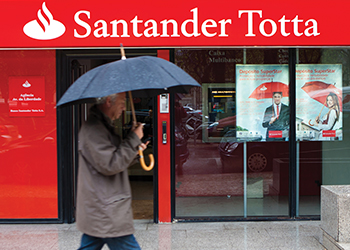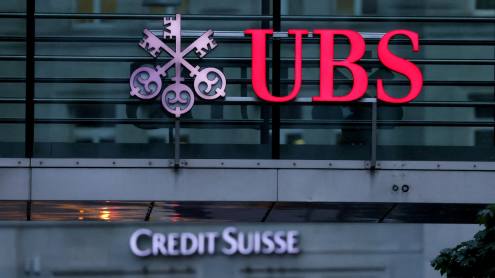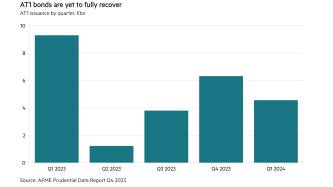Banks in Portugal have emerged from a punishing international bailout and a deep recession more robust, more efficient and more competitive. But as they move back to profitability and adapt to new shareholder structures dominated by powerful Spanish, Chinese and US investors, a fresh set of post-crisis tests awaits.
“Every Portuguese bank faces big challenges,” says Nuno Amado, chief executive of Millennium bcp, the country’s third largest lender by assets. “There is the huge challenge of negative interest rates, the digital challenge and the regulatory challenge. The profile of our customers is also changing and the market is growing intensely competitive. To overcome these challenges and gain market share, it is clear that we have to invest, progress and further improve our efficiency.”
Mr Amado sees 2017 as a transition year that marked Millennium’s recovery from the global financial crisis and a move into a new era where digitalisation, the EU’s tougher regulatory stance and competition from big Spanish groups will be prevailing issues. “Last year was a turnaround year, a defining moment when we moved back into profit, gained customers and enormously improved our cost-to-income ratio,” he says.
General turnaround
Portugal’s other leading banks underwent similar transitions in 2017 as the country's economic growth accelerated to 2.7%, the strongest rate since 2000. State-owned Caixa Geral de Depósitos (CGD), the largest bank by assets, posted a €52m profit after six consecutive years of losses totalling €3.8bn. The turnaround came after the EU approved a €5bn recapitalisation plan backed by public and private investment.
“CGD’s return to profit was supported by the positive evolution of our core businesses together with our efficiency, liquidity and risk indicators,” says chief executive Paulo Macedo. “This enabled us to strengthen our capital position despite non-recurrent costs due to staff resizing and other restructuring charges.” The bank’s common equity Tier 1 (CET1) ratio rose to 14% at the end of 2017, up from 12.1% a year earlier.
In March 2017, CGD unveiled a four-year strategic plan aimed at, among other things, cutting operating costs by 20% and lifting return on equity (ROE) – which had been negative from 2011 to 2016 – above 9%.
“Our strategic vision for 2020 is to become a bank soundly capitalised through organic generation and more resilient to risks, supported by an efficient infrastructure and improved commercial networks,” says Mr Macedo. “Our aim is to be a bank that can meet all the financial needs of our customers at a higher standard and retain our leadership in the Portuguese banking sector.”
A larger Santander
Banco Santander Totta, the second largest bank in Portugal, slightly ahead of Millennium in terms of assets and credit, posted the largest net profit in the sector in 2017, an increase of 10.3% on 2016 to €436.3m. Supported by its powerful Spanish parent, the bank has outperformed competitors since the financial crisis. “Santander Totta has presented the best results in Portuguese banking since 2008 and is the only bank to have returned positive results every year, generating more than €3bn in profits over that period,” says chief executive António Vieira Monteiro.
The bank expanded its Portuguese footprint during the crisis years, paying €150m for the healthy assets of Banco Internacional do Funchal (Banif) in the context of a €2.2bn state rescue in 2015. In December 2017, it absorbed the assets of Banco Popular Portugal, part of the struggling Spanish lender acquired by the Santander group in June. Mr Vieira Monteiro says acquiring Banif has given Santander Totta a strong market share in the Portuguese islands of Madeira and the Azores, while the acquisition of Popular Portugal has significantly improved its position in the small and medium-sized enterprise credit market.
Absorbing Popular also made Santander the largest private sector bank operating in Portugal. Millennium, however, is considered the country’s largest listed lender. “We are the only Portuguese bank with real turnover on the stock exchange,” says Mr Amado. Millennium, which lifted its 2017 net profit to €186.4m after effectively breaking even in 2016, was readmitted to the Stoxx Europe 600 index in March 2018.
BPI’s targets
Banco BPI, the smallest of Portugal’s top five banks, has also become the local arm of a big Spanish group. CaixaBank, Spain’s largest domestic lender and a long-standing shareholder in BPI, paid €645m early in 2017 to expand its stake from 45% to almost 85%. The bank went on to report its best results in a decade in 2017, with domestic earnings, excluding non-recurring items, up 21% on 2016 to €191m. But extraordinary costs stemming mainly from disinvestment in Angola saw its consolidated net profit drop sharply to €10.2m.
While investment and exports are expanding, loan demand from corporates has not yet picked up, despite historically low interest rates
CaixaBank chief executive Gonzalo Gortázar has set BPI a goal of raising ROE above 10% on a sustainable basis and cutting back its cost-to-income ratio to close to 50% by 2020. In 2017, when BPI contributed €176m to CaixaBank’s earnings, making it one of the group’s best performers, the Portuguese bank recorded an ROE of 9.6%, excluding extraordinary items, and a cost-to-income ratio of 63%, one of the highest among the country’s leading lenders.
In sharp contrast to the return to profit of its main competitors, Novo Banco, Portugal’s fourth largest lender by assets, posted a net loss of €1.4bn in 2017. It was a stark reminder of the continuing fallout from the collapse of Banco Espírito Santo (BES) in 2014, and the legacy of problem assets still weighing on the sector. The 'good bank' created out of the wreckage of BES in a €4.9bn rescue, Novo Banco was taken over in October 2017 by US equity fund Lone Star, which acquired 75%. The other 25% remained in the hands of Portugal’s bank resolution fund.
Booking €2.06bn in impairments, including bad loan provisions of €1.12bn, Novo Banco saw its net loss almost double from €788m in 2016. Low central bank interest rates and higher funding costs hit net interest income, resulting in a €890.9m drop in revenues – a fall of almost 9%. To lift its CET1 ratio from 12% to 12.8 %, the bank is drawing €792m from the resolution fund, half of it funded by a state loan.
Under the terms of the sale to Lone Star, the fund (which is jointly owned by all Portuguese banks) is committed to providing up to €3.9bn to prevent Novo Banco’s capital ratio from falling below a determined threshold due to losses on a portfolio of legacy assets.
NPL woes
The struggle to reduce non-performing loans (NPLs) has been key to the recovery of Portuguese lenders. Over the past two years, the ratio of total NPLs to total loans fell from 17.5% to 13.3%. For lending to non-financial private sector companies, the drop was from 18.4% to 16.4%. The total stock of NPLs has fallen by €13.5bn since its peak in June 2016.
Reflecting the huge effort banks have made to provision against problem debts, the coverage ratio of NPLs increased from 40.8% to 49.3% in the two years to December 2017.
Millennium comfortably exceeded its €1bn target for reducing NPLs in 2017, with a cut from €8.5bn in 2016 to €6.8bn – almost half of its 2013 level of €12.8bn. Total coverage of problem debts has risen from 86% to 106% in four years.
“Regulators always want more, but we believe a 20% reduction without destroying capital is a good pace,” says Mr Amado. “We achieved this through about one-third each of cash recoveries, write-offs and sales to investors. We will move forward this year at similarly ambitious pace that is compatible with increasing our business and lifting profitability.”
CGD, Portugal’s largest mortgage lender, saw the stock of foreclosed real estate assets drop slightly in 2017 to just over €1bn, with coverage of NPLs remaining stable at 45%. Mortgage lending, which accounts for more than 50% of the bank’s credit portfolio, fell to €25.9bn in 2017, down from €27bn in 2016. This partly reflected a drop in NPLs to 12.1% of total lending at the end of 2017, down from 15.8% a year earlier. A real estate boom is also increasing the value of properties used to guarantee loans.
“We aim to retain our leadership position in mortgage loans as an anchor for our overall relationship with individual customers,” says Mr Macedo.
A cost-cutting exercise
A drive to cut costs and improve efficiency has significantly reduced banks’ headcount and branch numbers. Between 2010 and 2017, CGD, Millennium, BPI and BES/Novo Banco cut their workforces by an average of 25% and their branch networks by 33%. Portugal, however, still has one of the highest densities of bank branches in Europe. The average cost-to-income ratio for the sector has fallen from a peak of more than 60% in 2013 to about 53%, largely driven in 2017 by growth in total operating income.
CGD, for example, cut its cost-to-income ratio from 78% to 53% in 2017, with an increased operating income accounting for 20 percentage points of the 25-point reduction. Millennium has lowered its cost-to-core income ratio from 86% in 2013 to 46%, a turnaround that Mr Amado says makes it “by far the most efficient of Portugal’s big banks and one of the most efficient in the eurozone”.
Similar strides have been taken to strengthen capital. The average CET1 ratio for the sector almost doubled from 7.4% in 2010 to 13.9% at the end of 2017. Banks have raised more than €20bn in equity, not including a further €5.8bn loaned by the state in the form of contingent convertible bonds, all now repaid.
External influences
As Portuguese banks move back into profit, having cleaned up their balance sheets and recognised more than €33bn in loan impairments, they face challenging market conditions and increasingly tough competition, particularly from big Spanish lenders.
“The competitive environment has become more intense as a result of the increased presence of Spanish banks,” says Mr Macedo at CGD. “While investment and exports are expanding, loan demand from corporates has not yet picked up, despite historically low interest rates. This penalises the return on our excess liquidity.”
Mr Amado respects his Spanish competitors, but sets great store by Millennium’s “Portuguese DNA”. As he puts it: “We consolidate here, we know the Portuguese economy and we believe we have a proximity [to our customers] that is different.” The bank had been losing customers for several years, particularly after merging different banking channels into a single brand in 2003. But in 2016, it broke even in terms of customer acquisitions and in 2017 gained almost 100,000 new account holders. “To do this in a country with a population of only 10 million in the face of strong competition marks a real turnaround,” says Mr Amado.
Founded in 1985 by a group of local businessmen, Millennium is, however, no longer controlled by Portuguese shareholders. The Chinese conglomerate Fosun owns about 25% and Sonangol, Angola’s state oil company, owns about 15%, with the remaining share capital divided roughly equally between Portuguese and international investors. “It is not a common shareholder structure, but it is a positive and supportive one,” says Mr Amado. “Europe should have more diversity of this kind.”
Out of Africa
While Spanish banks have been expanding into Portugal, Portuguese lenders have had to scale back their overseas operations, under pressure from the European Central Bank (ECB) to reduce what it sees as risky exposures.
BPI, for example, has begun divesting from Banco de Fomento Angola (BFA), which since about 2012 had been the bank’s main profit driver. BPI originally controlled the Angolan bank, but has cut its stake to 49%. BPI chief executive Pablo Forero says it will continue to divest gradually from BFA to a holding that satisfies both BPI and the ECB.
Other banks have similarly been divesting from international assets in Africa and elsewhere. “The ECB has been forcing the system to lower overseas risks,” says Joaquim de Souza, chief executive of Caixa-Banco de Investimento, part of the CGD group. “There’s a much higher capital charge for these stakes today and the accounting for stakes in international banks has become much more complicated.” The scaling down, he adds, was also a question of capital resources. “When your capital is scarce, the natural option is allocate it in your base country.”
Since the financial crisis, Millennium has sold loss-making banks in Greece and Romania. But it has held on to the banks it controls in Poland, where it has a 5% share of banking deposits, and Mozambique, as well as minority stake in an Angolan lender. “Our international portfolio is now diversified and stable,” says Mr Amado.
The fintech challenge
Fintech is another competitive challenge facing Portugal’s reshaped banking industry. Mr Macedo says: “[The] digital revolution is already having a disruptive impact on traditional banks as fintechs cherry-pick customers and services, and challenge banks on fee-based business, such as cards, payments, asset management and other activities subject to fewer regulatory and capital requirements.”
He is confident, however, that lenders have recognised the threat and are exploring new opportunities arising from digital transformation. “Banks are creating new businesses within their structures, making better use of customer insight, protecting core franchises, redesigning business models and engaging collaboratively with start-ups,” he says.
CGD considers itself the market leader in digital financial services in Portugal, with more than 1 million customers frequently using its digital platforms. Santander Totta cites a June 2017 market study to claim the most digital users as a percentage of its customers – 41% compared with a Portuguese average of 32%.
Mr Vieira Monteiro of Santander Totta sees fintech as both an opportunity and a threat for bricks-and-mortar banks. “The arrival of new competitors brings more innovation and new solutions, which can result in better banking services,” he says. “But it’s also important to ensure a level playing field where all the players are regulated.”












